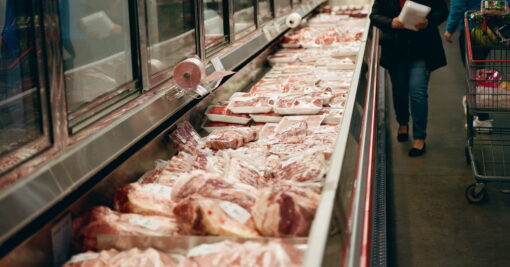Ribera (2023) showed Brazil challenging the U.S. as the top corn exporter. Here, I explore this competition dynamic a little further. Figure 1 shows that most U.S. and Brazilian exports occur at different times of the year. U.S. corn predominates in the first half of the year and Brazilian corn in the second half. In the soybean market, the opposite occurs. I added soybean to the analysis because Brazil has two corn crop seasons yearly. The first one competes with soybeans for land.
Figure 1 – Corn and Soybean Exports: U.S. vs. Brazil

Figure 2 – Corn and Soybean Prices

Sources for Fig.1 and 2: USDA/FAS-GATS (2023) provides the U.S. value and volume. MAPA-Agrostat (2023) provides the Brazilian value and volume. Prices are the ratio of value over volume. The bars show the harvest season for each crop and country, according to USDA/FAS -IPAD (2023). Green bars correspond to harvest season in Brazil. Red bars account for harvest season in the U.S. For Brazilian corn, the light green bar indicates the first crop, and dark green the second crop.
Companhia Nacional de Abastecimento CONAB (2023) estimated 317.6 M. tons of all grain produced in Brazil for the 2022/2023 crop season. Soybeans and corn make up 88.9% of this total. However, the static storage capacity is only 192.4 M. tons. As a result, there is a total deficit of 125.2 M. tons. Figure 3 shows corn and soybean surpassing the static storage capacity. Indeed, the installed capacity can handle only 68% of the current year’s soybean and corn production.
Figure 3 – Static Storage Capacity versus Soybean and Corn Production

The storage capacity geographical distribution could be more convenient. The Midwest states, the leading producers, can store approximately 50% of the soybean and corn they harvest. Furthermore, only 15.5% of static storage capacity is within farms. As a result, most farmers need to sell soybeans or corn even if prices are not attractive. This intensified selling increases the downward pressure on prices. Such behavior may help explain the price differences in Figure 2. So, the lack of storage capacity may lead Brazil to a pyrrhic victory – champion of volume, but with lower prices.
References
CONAB (2023). Retrieved from: https://www.conab.gov.br/
MAPA-Agrostat (2023). Retrieved from: https://indicadores.agricultura.gov.br/agrostat/index.htm
Ribera, Luis. “Brazil Challenging U.S. Corn Export Top Spot.” Southern Ag Today 3(4.4). January 26, 2023.
USDA/FAS-GATS (2023). Retrieved from: https://apps.fas.usda.gov/gats/default.aspxUSDA/FAS -IPAD (2023). Retrieved from: https://ipad.fas.usda.gov/ogamaps/cropcalendar.aspx





